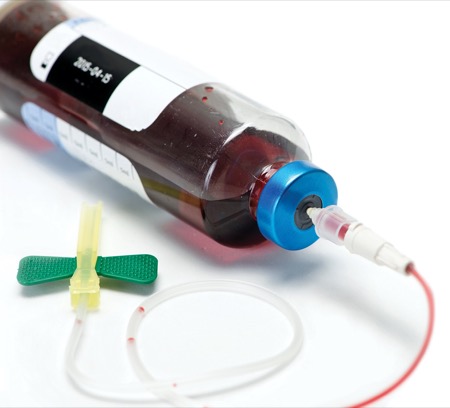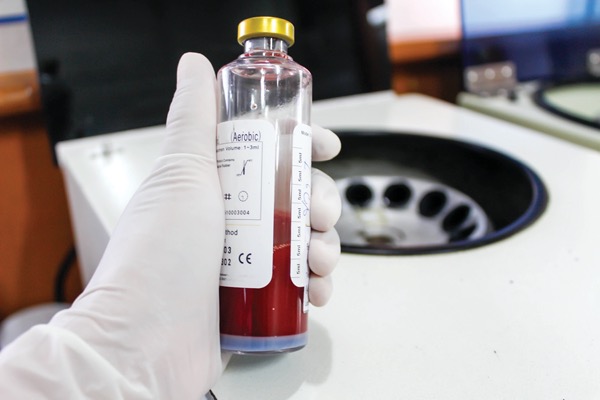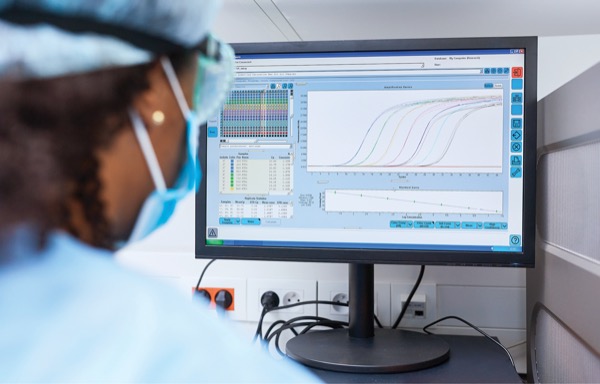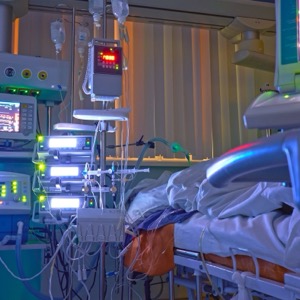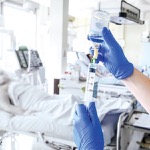According to a recent study, the procalcitonin-to-albumin ratio (PAR) may be a new biomarker for the identification of sepsis in newborns with pneumonia. In a second study, researchers evaluated whether maternal plasma concentrations of soluble suppression of tumorigenicity 2 (ssT2) may be used as a potential biomarker for bacteremia in pregnant women with pyelonephritis. Lastly, researchers from Australia aimed to identify a gene signature that could differentiate between sepsis and aseptic inflammation in patients receiving antibiotics in the ICU and compare the signature with commonly used biomarkers for sepsis.
Identifying Neonatal Sepsis
In a retrospective study, the researchers evaluated 912 newborns with pneumonia from January 2016 to July 2021 (Ann Med 2023;55[1]:920-925). They collected clinical and laboratory data from electronic health records. Based on the International Pediatric Sepsis Consensus, among the 912 neonates with pneumonia, 561 were diagnosed with sepsis.
The newborns were divided into two groups: a sepsis and a pneumonia group. The researchers used a multivariate logistic regression analysis to determine whether PAR was a potential independent indicator for sepsis in the newborns. They also performed a receiver operating characteristic (ROC) curve analysis to evaluate the diagnostic value.
The researchers found newborns diagnosed with sepsis have a higher PAR (P<0.001), which was positively correlated with the level of C-reactive protein (r=0.446; P<0.001). In addition, PAR was shown to be an independent predictor of the presence of sepsis in infants with pneumonia.
The ROC curve also determined PAR a reliable identifier of sepsis in neonates with pneumonia (area under the ROC curve [AUROC], 0.72; 95% CI, 0.68-0.75; P<0.001).
The researchers concluded PAR could be used as a biomarker for sepsis in this patient population.
Potential Biomarker for Bacteremia
In another study, researchers evaluated whether maternal plasma concentrations of ssT2 is a potential biomarker for bacteremia in pregnant women with pyelonephritis.
Acute pyelonephritis in pregnancy is a risk factor for obstetric and medical complications and a major cause of sepsis. Bacteremia complicates 15% to 20% of pyelonephritis episodes during pregnancy.
“In the United States, pregnancy-related sepsis is a rare occurrence, with only 0.4% of all pregnancies affected,” said Tinnakorn Chaiworapongsa, MD, FACOG, the director of the Maternal-Fetal Medicine Fellowship Program at Wayne State University School of Medicine, in Detroit. “However, sepsis is responsible for 23% of maternal deaths. The maternal mortality rate in the United States is increasing, and without intervention, we expect the burden of sepsis to rise as well.”
The cross-sectional study included women with normal pregnancy (n=131) and those with acute pyelonephritis (n=36) (J Matern Fetal Neonatal Med 2023;36[1]:2183470). The researchers used a combination of clinical findings and a positive urine culture to diagnose acute pyelonephritis. Patients were also divided into two groups according to blood culture results: those with and without bacteremia. The researchers were able to determine plasma concentrations of ssT2 with a sensitive immunoassay.
In normal pregnancies, the maternal plasma ssT2 concentration increased with gestational age. Pregnant women with pyelonephritis had a higher median plasma ssT2 concentration than those with a normal pregnancy (85 [IQR, 47-239] ng/mL vs. 31 [IQR, 14-52] ng/mL; P<0.001).
In the patients with pyelonephritis, those with a positive blood culture had a higher median plasma concentration of ssT2 than those with a negative blood culture (258 [IQR, 75-305] ng/mL vs. 83 [IQR, 46-153] ng/mL; P=0.03).
With a sensitivity of 73% and specificity of 95% (AUROC, 0.74; 95% CI, 0.50-0.97; P=0.003), an elevated plasma ssT2 concentration of at least 215 ng/mL had a positive likelihood ratio of 13.8 and negative likelihood ratio of 0.3 to identify patients with a positive blood culture.
Delayed intervention is a significant cause of sepsis-related morbidity and mortality, and the detection of sepsis in pregnancies is elusive because many of the signs and symptoms of sepsis mimic normal physiologic changes in pregnancy, Dr. Chaiworapongsa explained. The implementation of sepsis bundles helps to quickly identify sepsis in non-pregnant adults, but do not perform as well in pregnant patients.
The researchers concluded ssT2 is a candidate biomarker for the identification of bacteremia in pregnant patients with acute pyelonephritis.
“Blood cultures are the gold standard for diagnosis of bacteremia, and bacteremia is a risk factor for sepsis. However, blood cultures are time-insensitive [may take up to five days] and expensive,” Dr. Chaiworapongsa said. “There is currently one FDA-approved assay for ssT2 in the United States, and it has an approximately three-hour turnaround time for results.”
In the ICU
To identify a gene signature that could differentiate between sepsis and aseptic inflammation in patients receiving antibiotics in the ICU and compare the signature with commonly used biomarkers for sepsis, researchers from Australia enrolled patients receiving antibiotics in a retrospective study.
In the study, 91 patients receiving antibiotics were diagnosed as having blood culture sepsis, blood culture–negative sepsis or aseptic inflammation (J Crit Care 2023;76:154286). For both gene expression sequencing analysis and measurement of previously identified biomarkers, blood was collected less than a day after commencement of antibiotics.
The researchers identified 53 differentially expressed genes that accurately discriminated between blood culture-positive sepsis and aseptic inflammation in patients given antibiotics (AUROC, 0.97 [95% CI, 0.95-0.99]). They then validated the gene signature in a publicly available database.
The gene signature outperformed previously identified sepsis biomarkers, including C-reactive protein (AUROC, 0.72; 95% CI, 0.57-0.87), N-terminal pro–B-type natriuretic peptide (AUROC, 0.84; 95% CI, 0.73-0.96) and Septicyte LAB (Immunexpress) (AUROC, 0.8; 95% CI, 0.68-0.93). The gene signature was comparable to procalcitonin (Thermo Fisher Scientific) (AUROC, 0.96; 95% CI, 0.9-1).
“I was not overly enthusiastic about the studies’ findings,” Monty Mazer, MD, a pediatric cardiac intensivist in the Division of Pediatric Cardiothoracic Critical Care Medicine at University Hospitals, in Cleveland, told Infectious Disease Special Edition. “It is not uncommon to detect a statistically significant difference in lab values or biomarkers with promising ROC curves to differentiate subsets of disease. However, it is much more difficult to translate these findings into a clinically significant practice change that will significantly improve patient outcomes.
“Neonates and pregnant women are important patient populations to study, as these patient populations are at higher risk for rapid, acute decompensation with few obvious early clinical warning signs. Discovery of a marker that could truly detect sepsis in these patients during early phases could be game-changing,” he said.
But so far, there remains no biomarker or test that will precisely determine which hospitalized patient is in the early stages of developing sepsis to prevent rather than need to treat this life-threatening condition. In general, patients who develop sepsis in the outpatient setting will often seek medical care too late, and all providers can do is offer supportive care through the acute phase of the illness, he said.
“The chronically ill or immunocompromised patients are unfortunately at high risk for developing sepsis, specifically from resistant or difficult-to-treat organisms, which is why many individuals who have conquered cancer, received a transplanted organ [and] live a healthy life with a previously debilitating degenerative or autoimmune illness eventually develop and often succumb to sepsis.”
Most likely, Dr. Mazer added, the future for sepsis biomarkers is not in recognition of the disease, but in differentiating distinctive categories of patients with sepsis toward a precision medicine approach to treatment.
Dr. Chaiworapongsa reported no relevant financial disclosures. Dr. Mazer reported being listed on a patent pending regarding the use of an assay called an ELISpot to predict immune function in patients.
This article is from the August 2023 print issue.


